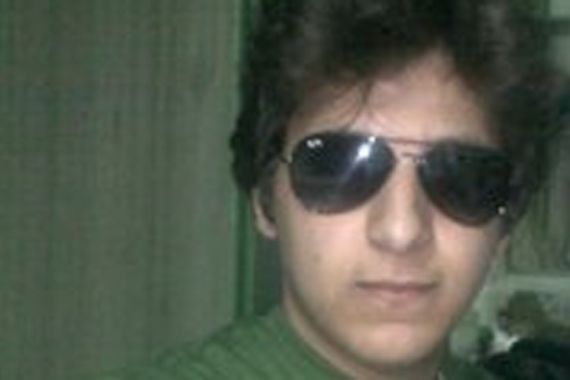Wave of enforced disappearances in Syria
At least 221 Syrians have gone missing in past three days of the violent crackdown, a rights group says.

 |
| Abdel Aziz Kamal al-Rihawi, 18-year-old Syrian, was last seen on Friday in Harasta, a town in the Damascus |
At least 221 Syrians have gone missing in the past three days of the violent crackdown on pro-democracy protests, said Insan, a Syrian human rights organisation, with many feared forcibly disappeared.
Working with a team of human rights researchers inside Syria, Insan said it had documented the names of 221 Syrians missing since the early hours of Friday morning, none of whom the authorities had acknowledged holding in detention.
“We are not counting people who we know have been detained. We are strictly talking here about people whose families do not know if they are dead or alive. People who have disappeared,” said Wissam Tarif, executive director of Insan.
The rights group and its network inside Syria had spoken to close family members of all 221 missing persons, said Tarif, and while some had yet to make contact with the security services, most families had been told by authorities that their relative was not being held.
‘Abused, beaten, detained’
“Family members have been shouted at, abused, beaten and even detained when asking at political security branches for the whereabouts of their relatives,” said Tarif.
Under the terms of an international treaty, enforced disappearance is defined as the arrest, detention or abduction of a person by the state or agents of the state followed by the refusal of authorities to acknowledge the whereabouts of the missing person, thus placing them outside the protection of the law.
Enforced disappearance is a crime against international law, according to Amnesty International, the London-based human rights watchdog.
“The circumstances of each disappearance vary,” said Insan. “Many were kidnapped from the streets after or during anti-government demonstrations. Others were kidnapped from the streets of their neighborhoods by security forces or by members of the recently established local Baath Party community watch.”
According to Insan, Wissam Araji, one of the disappeared, was last seen late Thursday night in Duma, the town close by Damascus that has become a focus for protests and where nine people were killed on Friday.
“We do not know where Wissam is. I am scared for his life and scared that security comes and raids our house and takes me or any other family member,” said Alaa Araji, Wissam’s brother.
 |
| Click for comprehensive coverage on the unrest |
“Since Wissam disappeared my mother did not stop crying and my Dad does not know what to do. His disappearance has paralysed us.”
Abdel Aziz Kamal al-Rihawi, an 18-year-old Syrian, was last seen on Friday afternoon in Harasta, a town in the Damascus countryside where three people were killed on Friday.
A relative told Insan Rihawi had contacted him by phone, saying, “They are shooting at everyone. I will go home as soon as we can get out of here” That was the last time family heard anything from him.
“We expect that some of the people on the list are dead. We know there are bodies being held in Tishreen military hospital and in the military hospital in Aleppo,” said Tarif of Insan.
The majority of the missing people disappeared during the wave of protests across towns nearby the capital and its suburbs, while some 68 people went missing in the central city of Homs alone. A further 41 people have disappeared from Daraa and its surrounding villages.
In a meeting last month the UN Working Group on Enforced or Involuntary Disappearance discussed the case of thousands of Syrians who vanished during the rule of late Syrian president, Hafez al-Assad.
In a written statement to the UN Human Rights Council, Radwan Ziadeh, head of the Damascus Centre for Human Rights Studies, put the number of Syrians who disappeared between 1980 and 1987 at some 17,000.